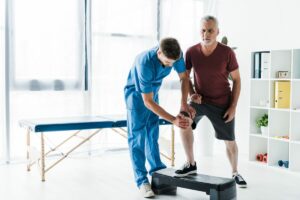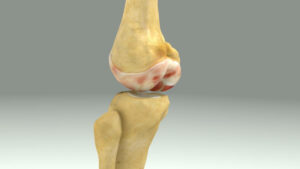Free download: Top 10 Natural & Easy Remedies for Joint Pain from Home. Learn these helpful remedies.
Estimated Reading Time: 8 minutes read
Hello there, dear friends! Are you grappling with arthritis and seeking ways to enhance your balance? If so, you’ve arrived at just the right spot! Today, we’re going to delve into a selection of balance exercises specially designed for individuals like you who are courageously managing arthritis.
Our bodies are amazing, aren’t they? We can walk, run, dance, and do a whole lot more, thanks to the magic of balance. However, with arthritis in the picture, maintaining that balance can become a tad more challenging. But that doesn’t mean it’s impossible. With the right exercises and determination, you can improve your balance and enjoy life’s many adventures.
So, are you ready to put on your sneakers and meet these challenges head-on? Let’s get into the thick of things and introduce you to the top five balance exercises that can help you manage arthritis with renewed confidence!
Table of Contents
Understanding Arthritis and Balance
Arthritis, as some of you might know, is a condition that leads to inflammation and pain in the joints. It can make your daily activities seem like uphill tasks and even throw your balance off kilter. But why does arthritis affect your balance, you may wonder?
Our ability to maintain balance is a complex process that involves the seamless coordination of multiple body systems, including our vision, muscles, joints, and nervous system. Arthritis can interfere with this process, particularly affecting the joints and muscles. It can cause joint stiffness, reduced range of motion, muscle weakness, and pain, all of which can impair balance.
However, it’s not all doom and gloom. The good news is that balance exercises can help counter these effects of arthritis. They can strengthen your muscles, enhance joint flexibility, and improve coordination, thus helping you regain control and reduce the risk of falls. Let’s explore this further in the next section.
The Power of Balance Exercises
Balance exercises are like the unsung heroes in the battle against arthritis. They might seem simple and easy, but they pack a powerful punch when it comes to enhancing your balance. Now, you might ask, ” What are the benefits of these exercises?”
Well, for starters, balance exercises can improve your muscle strength, particularly in the lower body. Stronger muscles provide better support to your joints, which can alleviate arthritis symptoms and improve mobility.
Next, these exercises can increase your joint flexibility. Regular practice can help reduce the stiffness in your joints, allowing for smoother, more comfortable movements.
Furthermore, balance exercises can improve your proprioception – the body’s ability to sense its position and movement in space. Enhanced proprioception can significantly improve your overall balance and coordination, reducing the risk of falls.
So, with these benefits in mind, let’s dive into our top five balance exercises designed specifically for individuals managing arthritis.
5 Easy Balance Exercises for Arthritis
1. Single Leg Balance Progression
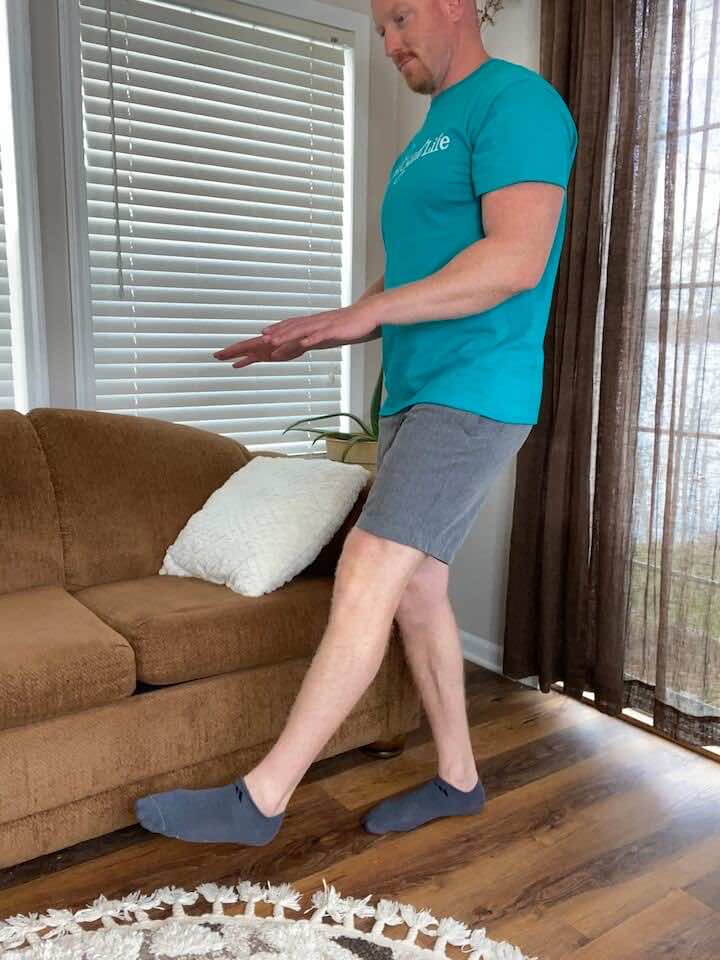

- Stand tall with your feet hip-width apart, placing your hands on a counter or sturdy surface for support.
- Lift one foot off the ground and balance on the opposite leg.
- Hold this position for 30 seconds, focusing on maintaining your balance and stability.
- Repeat the single-leg balance for a total of 3 sets on each side.
- As you become more comfortable and confident, progress to the next level of difficulty.
- Gradually shift your hand position from using the full palm on the counter to just your fingertips for support.
- Once you feel steady, challenge yourself further by using only one hand on the counter while keeping the other hand by your side.
- Finally, progress to performing the single-leg balance without any hand support, relying solely on your own balance and stability.
- Remember to engage your core muscles, keep your posture upright, and breathe steadily throughout the exercise.
2. Single Leg Balance with Head Turn Progression
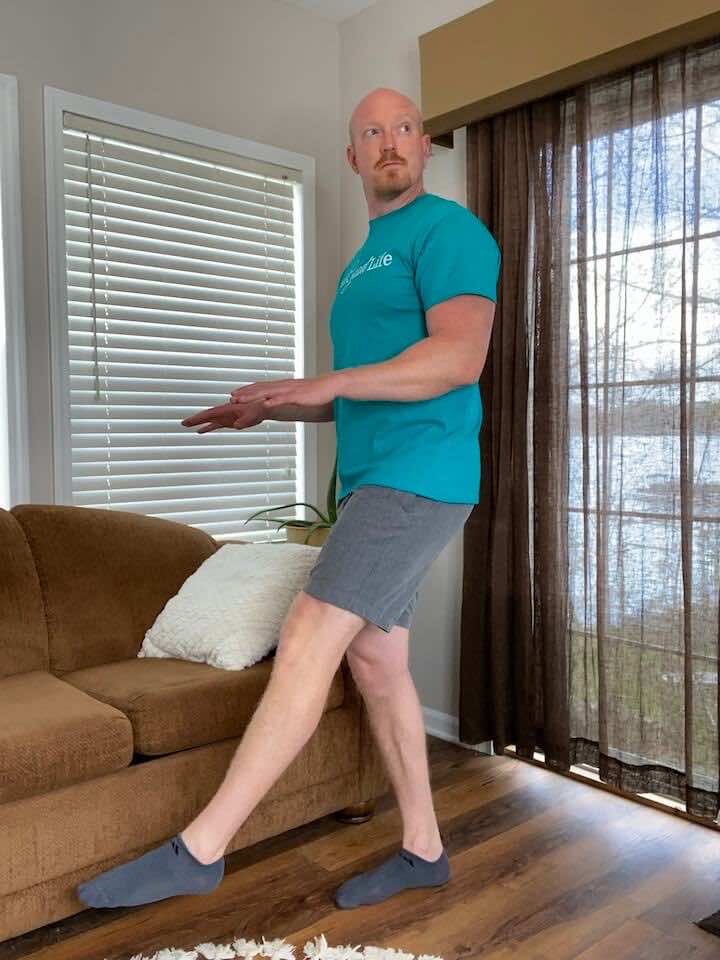

- Stand tall with your feet hip-width apart, placing your hands on a counter or sturdy surface for support.
- Lift one foot off the ground and balance on the opposite leg.
- Keep your gaze forward and your head facing straight ahead.
- Slowly turn your head to the left, then return it to the center. Next, turn your head to the right, and return it to the center.
- Continue rotating your head from left to right while maintaining your balance on one leg.
- Hold this position for 30 seconds, focusing on stability and coordination.
- Repeat the single-leg balance with a head turn for a total of 3 sets on each side.
- As you become more comfortable and confident, progress to the next level of difficulty.
- Gradually shift your hand position from using the full palm on the counter to just your fingertips for support.
- Once you feel steady, challenge yourself further by using only one hand on the counter while keeping the other hand by your side.
- Finally, progress to performing the single leg balance with a head turn without any hand support, relying solely on your own balance and stability.
- Remember to engage your core muscles, keep your posture upright, and breathe steadily throughout the exercise.
3. Single Leg Balance with Eyes Closed Progression
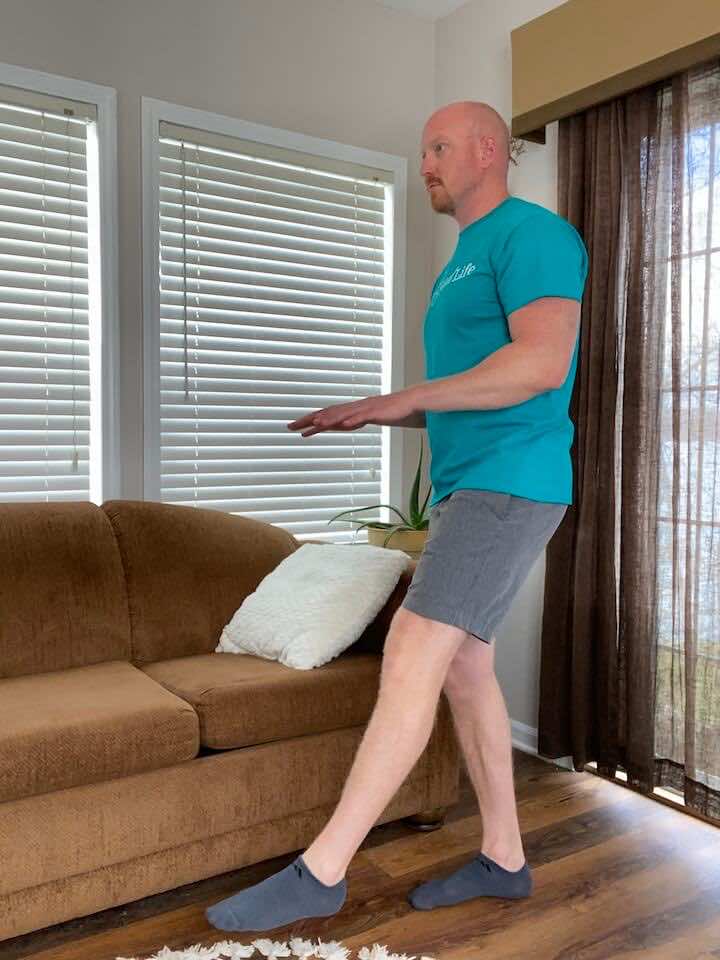
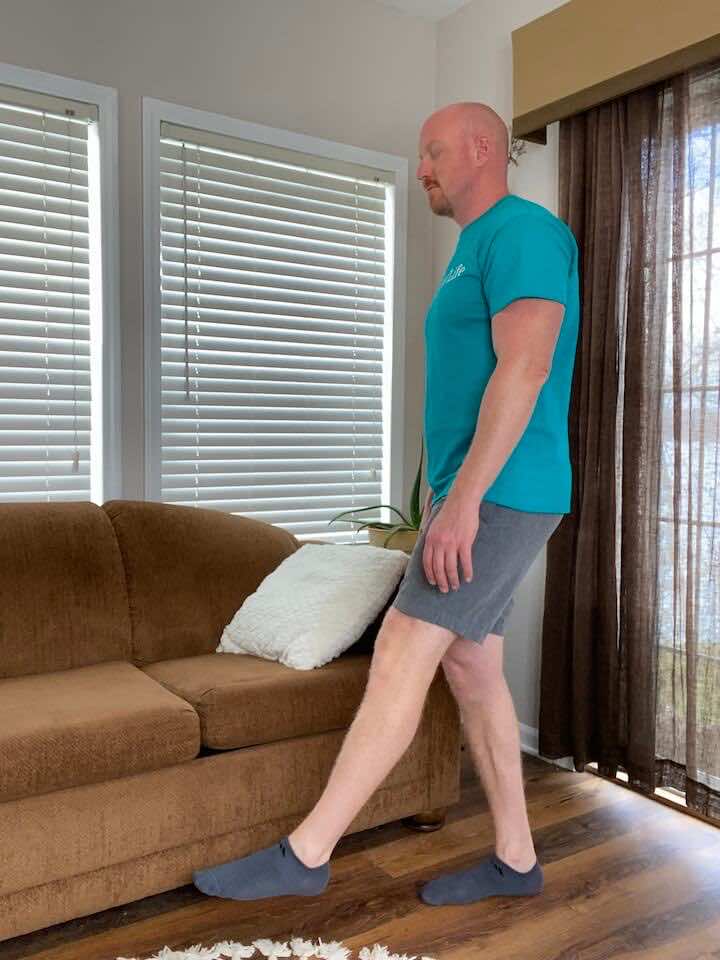
- Stand tall with your feet hip-width apart, placing your hands on a counter or sturdy surface for support.
- Lift one foot off the ground and balance on the opposite leg.
- Slowly close your eyes while maintaining your balance and stability.
- Hold this position for 30 seconds, focusing on your body’s proprioception and maintaining control.
- Repeat the single-leg balance with eyes closed for a total of 3 sets on each side.
- As you become more comfortable and confident, progress to the next level of difficulty.
- Gradually shift your hand position from using the full palm on the counter to just your fingertips for support.
- Once you feel steady, challenge yourself further by using only one hand on the counter while keeping the other hand by your side.
- Finally, progress to performing the single leg balance with eyes closed without any hand support, relying solely on your own balance and stability.
- Remember to engage your core muscles, keep your posture upright, and breathe steadily throughout the exercise.
4. Dynamic Single Leg Balance Progression

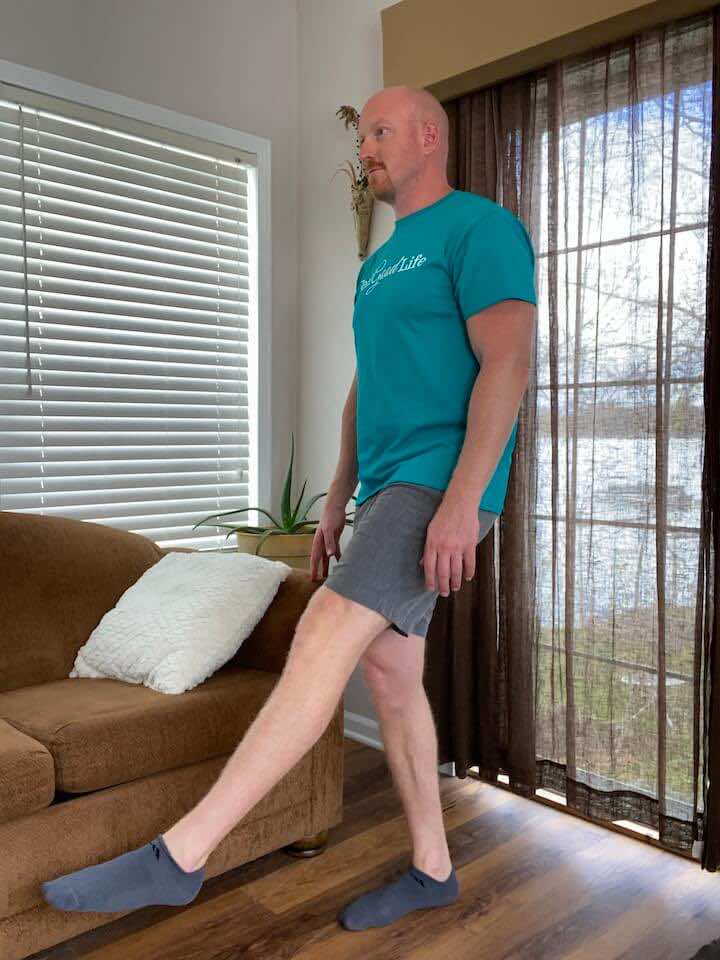
- Stand tall with your feet hip-width apart, placing your hands on a counter or sturdy surface for support.
- Lift one foot off the ground and balance on the opposite leg.
- Maintain your balance and stability on one leg as you perform dynamic movements with the other leg.
- Start by reaching the lifted leg forward, extending it as far as comfortable without losing balance.
- Return the lifted leg to the starting position and then reach it out to the side, maintaining control.
- Bring the lifted leg back to the starting position before extending it backward, focusing on stability.
- Repeat this sequence of forward, side, and back reaches for 30 seconds on each side.
- Aim to perform a total of 3 sets on each leg.
- As you become more comfortable and confident, progress to the next level of difficulty.
- Gradually shift your hand position from using the full palm on the counter to just your fingertips for support.
- Once you feel steady, challenge yourself further by using only one hand on the counter while keeping the other hand by your side.
- Finally, progress to performing the dynamic single-leg balance exercise without any hand support, relying solely on your own balance and stability.
- Remember to engage your core muscles, keep your posture upright, and breathe steadily throughout the exercise.
5. Dynamic Tightrope Walk
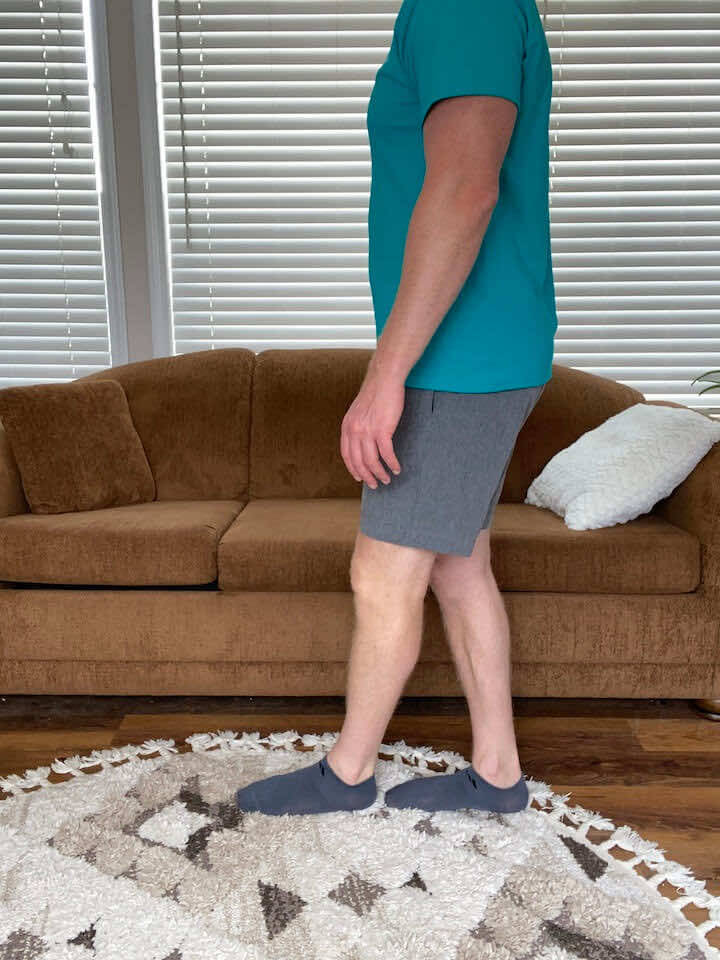
- Find a clear space and place a line of tape on the floor, or imagine an imaginary line.
- Stand tall and imagine yourself walking on a tightrope with one foot in front of the other.
- Begin by stepping forward with one foot, placing it directly in front of the other foot, heel to toe.
- Continue walking along the line, maintaining the heel-to-toe position as if you’re balancing on a tightrope.
- Walk back and forth along the line for three laps, focusing on balance and coordination.
- Find a point ahead of you to look at instead of looking down, as this will help improve your balance.
- If you feel unsteady, you can perform the tightrope walk next to a counter or sturdy surface to hold onto if needed.
- Remember to engage your core muscles, keep your posture upright, and breathe steadily throughout the exercise.
Conclusion
And there you have it, folks! The top 5 balance exercises to make arthritis a less painful part of your life. Remember, arthritis may be a constant companion, but it doesn’t have to be a party pooper. By incorporating these exercises into your routine, you’re not just improving your balance and stability. You’re also taking a proactive step towards better mobility, less pain, and a higher quality of life. It’s like telling arthritis, “Hey, I’m in charge here!”
Now, I know starting a new exercise routine can feel a bit daunting, especially when you’re dealing with arthritis pain. But give these exercises a chance. Start slow, be patient with yourself, and gradually increase your intensity as your balance improves. And remember, it’s not about perfection. It’s about progress. Every step you take towards better balance is a victory, no matter how small. So, what are you waiting for? Let’s get balancing!











